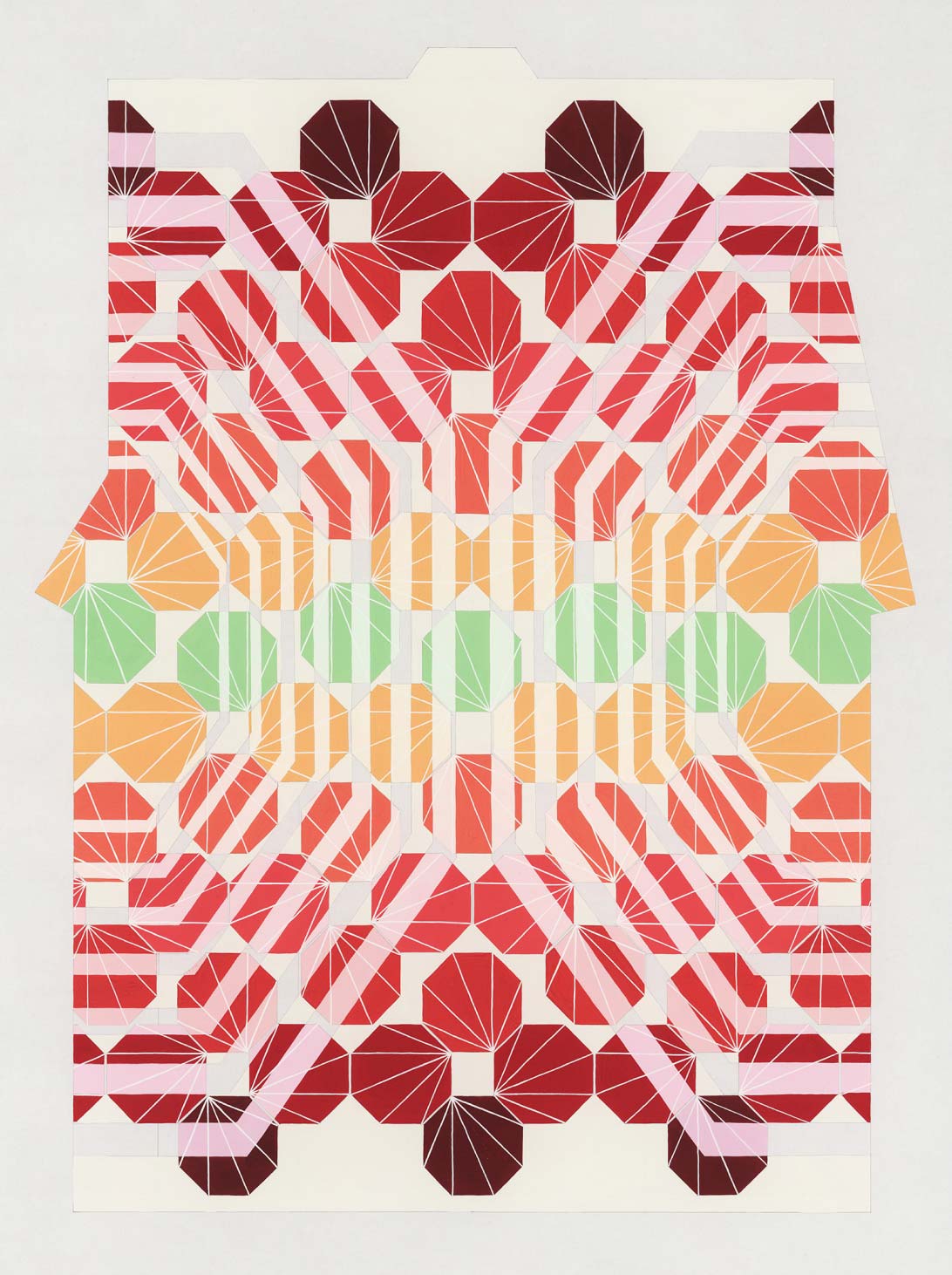Worcester Wedding Kimono, Pt. I
thishis virtual exhibition concludes with a two-part look at the specially commissioned, contemporary wedding kimono created by Chiso for the Worcester Art Museum. It is the first ever kimono to be commissioned as an artwork for an art museum. It will be on view in our in-house exhibition, Kimono in Print: 300 Years of Japanese Design, opening February 6, 2021. Watch Chiso's senior designer, Imai Atsuhiro, describe his conception of WAM's wedding kimono, and come back next week for Part II and the exciting conclusion of this show.
Artistry & Beauty
WAM’s wedding kimono represents the highest level of artistry and beauty in the kimono arts today. New England and Japan’s shared appreciation for the natural beauty of the seasonal landscape is reflected in the repeated motif of an abstracted maple leaf—a significant symbol in both cultures.
The octagon framing the maple leaf pattern is an auspicious motif that represents the number eight, a symbol of abundance, as well as a reference to Chiso’s company crest.
About this kimono

New England & Japan
Inspired by the celebrated “Seven Hills” of Worcester, the garment features an autumnal palette of seven colors, as well as seven advanced decorating techniques. Some of these techniques are new while others are at risk of disappearing, not because they are “traditional” but because they are often labor-intensive, making it difficult to attract a younger generation of artisans. For example, a technique used in the commissioned kimono called okedashi shibori (barrel tie-dyeing) involves using a wooden barrel specifically made for dyeing large sections of fabric. Once certain parts of the fabric's design are isolated, or reserved, in the interior of the barrel, the barrel is carefully sealed and sent to the dyer to immerse in a vat of color. Master craftsman Matsuyama Itsuo specializes in the crucial and strenuous work of sealing the barrel, and he does not have any apprentice to pass down his knowledge. New wooden barrels with the special sealing mechanism are no longer produced because the last craftsman who made them died without any successors. The studio, therefore, carefully uses (and maintains) the remaining nine wooden barrels, and Matsuyama is also the last barrel tie-dyeing specialist in Chiso’s network who knows how to seal them.
The approach to the execution of the Worcester kimono’s decoration reflects Chiso’s awareness of the need for both the innovation and the preservation of highly evolved textile skills and the desire to honor the coexistence of these methods in contemporary kimono-making.